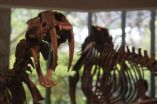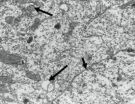(Press-News.org) Scientists at the University of Colorado School of Medicine have shed light on one of the most common of ailments – the runny nose.
Your respiratory tract is under constant attack and the nose is the first line of defense. Often, especially as the weather warms, the assault comes from allergens, which cause the body to fight off a perceived threat. Infections, too, are a problem.
But millions of people get a runny nose and have difficulty breathing without an allergic attack or infection. What many people call the sniffles, scientists refer to as "non-allergic rhinitis."
Although it is common, the problem has been mysterious; researchers had not figured out why this happens – suspects include air pollution, strong emotions, even spicy food -- and so have not been able to come up with a treatment beyond some variation of time, tea and tissues.
Now, the CU team led by Thomas Finger, PhD, has figured out what may be going on to cause so many people discomfort. Understanding the cause could lead to figuring out a cure.
Finger and his team, supported by a National Institutes of Health grant and working with a Danish colleague, report in the Proceedings of the National Academy of Sciences that they found cells lining the noses of mice that may be key.
These cells – called solitary chemosensory cells (SCCs) -- detect potential irritants and pass along the alert to pain-sensing nerve terminals.
The nerves then release a substance that triggers the body's defenses, called an inflammatory response. The result -- among other things, a runny nose and difficulty breathing.
"Understanding how this works can help researchers try to figure out how to prevent this response," Finger says. "What if we could deaden the pathway that the body takes to fight off an attack that, in this case, is not really threatening?"
It's not yet certain that the process is identical in humans, Finger says. But if it is, and if some people are responding to substances or smells that appear to be a threat but actually are benign, then additional research could find a way to help millions of people to, literally, breathe easier.
INFORMATION: END
CU researchers unraveling what's behind the sniffles, hoping for a treatment
2014-04-10
ELSE PRESS RELEASES FROM THIS DATE:
China looks to science and technology to fuel its economy
2014-04-10
Maintaining stability in the face of rapid change and growth, and proactively partaking in cooperative global ties in science and technology fields will be key in helping China become an innovation-based economy, according to Denis Simon, vice provost for International Strategic Initiatives at Arizona State University.
One of the world's leading experts on science, technology and innovation in China, Simon recently hosted an ASU conference that focused on the evolving role of science and technology in China's international relations.
Supplemented with strategic investments ...
Researchers looking to create new bone tissue generation technique
2014-04-10
UT Arlington and Texas Health Arlington Memorial Hospital are investigating whether bone grown from the body's own stem cells can replace traditional types of bone grafting.
The process, which has been successful in previous lab experiments, uses biodegradable polymer scaffolding material and bone morphogenetic protein, or BMP, which was inserted into the abdomen of mice to attract stem cells that in turn produced bone. BMPs are proteins known to promote bone growth. The research is detailed in a new paper, "Tissue Engineering Bone Using Autologous Progenitor Cells in ...
La Brea Tar Pit fossil research shows climate change drove evolution of Ice Age predators
2014-04-10
LOS ANGELES — Concerns about climate change and its impact on the world around us are growing daily. New scientific studies at the La Brea Tar Pits are probing the link between climate warming and the evolution of Ice Age predators, attempting to predict how animals will respond to climate change today.
The La Brea Tar Pits are famous for the amazing array of Ice Age fossils found there, such as ground sloths, mammoths, and predators like saber-toothed cats and powerful dire wolves. But the climate during the end of the Ice Age (50,000-11,000 years ago) was unstable, ...
Acupuncture normalizes brain structure and damaged neurons following heroin relapse
2014-04-10
Heroin abuse can damage many brain areas, including the pedunculopontine tegmental nucleus of the midbrain, the ventral tegmental area, and nucleus accumbens. Persistent use of heroin induced irreversible damage to the nervous system. To verify the relationship between acupuncture, neurotrophic factor expression and brain cell structural changes, a research team from Anhui University of Chinese Medicine in China established a rat model of heroin relapse using intramuscular injection of increasing amounts of heroin. During the detoxification period, rat models received acupuncture ...
Brainy courage of the rainbowfish
2014-04-10
The boldest black-lined rainbowfish are those that are born in the wild. Also more fearless are those that analyze information both sides of their brains. This is the conclusion of Australian researchers Culum Brown and Anne-Laurence Bibost from Macquarie University, in a study published in Springer's journal Behavioral Ecology and Sociobiology.
The preference to analyze and react to information with either the left or right hemisphere of the brain is called cerebral lateralization, and is widespread among vertebrates. Lateralization is seen in the preference of humans ...
Identified epigenetic factors associated with an increased risk of developing cancer
2014-04-10
In 10% of human tumors there is a family history of hereditary disease associated with mutations in identified genes. The best examples are the cases of polyps in the large intestine associated with the APC gene and breast cancer associated with BRCA1 and BRCA2 genes. In the remaining 90% of cases are believed to have an increased risk of developing cancer in relation to genetic variants less powerful but more often, for example, doubles the risk of having a tumor that lacks this small change, called polymorphism.
In the last decade, hundreds of studies have been conducted ...
Experts disagree on horses with incoordination
2014-04-10
A trip to the veterinarian may prove fatal to a horse, even if it is not necessary to put the animal down. In Europe if the horse is found to be ataxic, which is most often due to the disease 'wobbler syndrome', the horse is likely to be put down immediately. If a horse suffers from this disease, putting it down can be a necessity, as the animal can be dangerous to ride and handle. But now new research from the University of Copenhagen and the Royal Veterinary College in the UK shows marked disagreement among experts about when a horse is ataxic and severity of the ataxia. ...
Proof that antidepressants and breastfeeding can mix
2014-04-10
University of Adelaide researchers have found that women on antidepressant medication are more successful at breastfeeding their babies if they keep taking the medication, compared with women who quit antidepressants because of concerns about their babies' health.
These results have been presented this week at the 18th Perinatal Society of Australia and New Zealand (PSANZ) Annual Conference in Perth.
Using data from the Danish National Birth Cohort in Denmark, researchers in the University of Adelaide's Robinson Research Institute studied the outcomes of 368 women who ...
Special function of nestin+ neurons in medial septum-diagonal band of Broca in adult rats
2014-04-10
Dr. Yuhong Zhao and co-workers from Sun Yat-sen University in China explored the projection of nestin+ neurons to the olfactory bulb and the time course of nestin+ neurons in the medial septum-diagonal band of Broca in adult rats during injury recovery after olfactory nerve transection. These researchers observed that all nestin+ neurons were double-labeled with ChAT in the medial septum-diagonal band of Broca. Approximately 53.6% of nestin+ neurons were projected to the olfactory bulb and co-labeled with fast blue. A large number of nestin+ neurons were not present in ...
Increased time on Facebook could lead women to negative body images
2014-04-10
Washington, DC (April 7, 2014) – The mediated version of what women should look like has always been under scrutiny, particularly looking at actresses and fashion models. But what about body image from social networks and friends? A recent study by researchers in the United Kingdom and United States, found that more time on Facebook could lead to more negative feelings and more comparisons to the bodies of friends.
Petya Eckler, University of Strathclyde; Yusuf Kalyango Jr., Ohio University; and Ellen Paasch, University of Iowa will present their findings at the 64th ...



